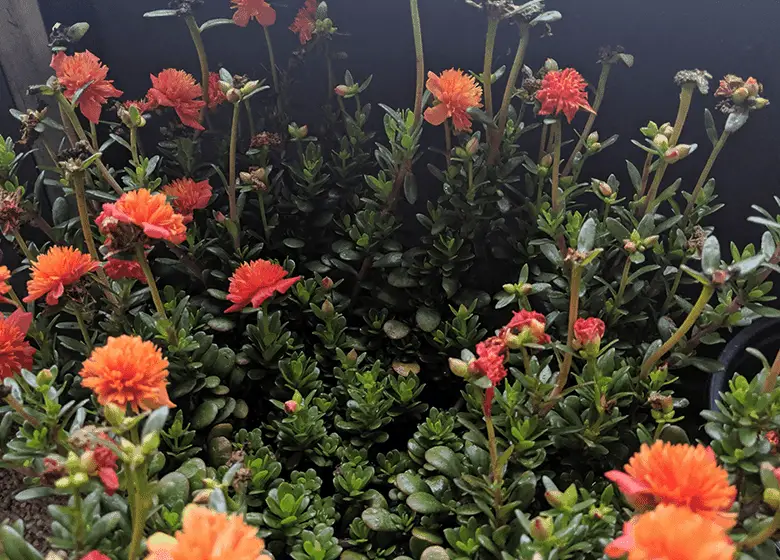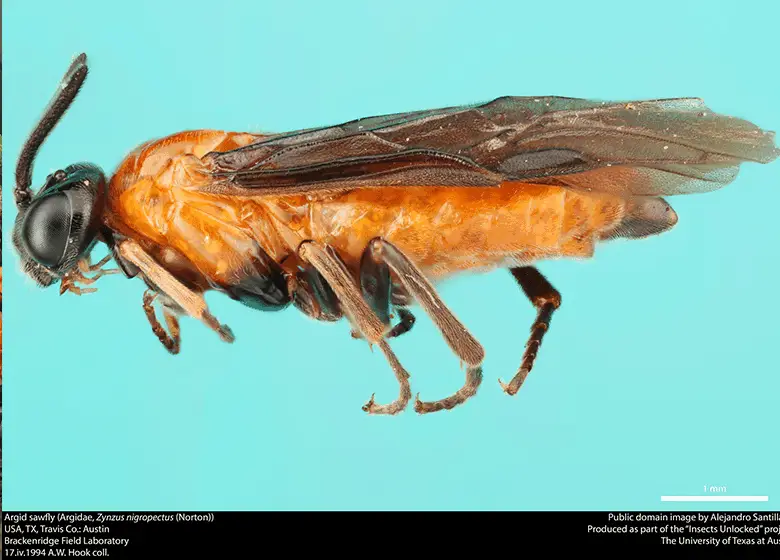Purslane is a vigorous weed common in Florida, where it tolerates the hot and dry conditions.
It is either seen as a pest to be poisoned and pulled or a prized plant with many health benefits. The plant has fleshy, edible and succulent stems and leaves. It tends to be a trailing plant and can reach up to 10 cm.
The means by which it reached North America remains unknown, but it was used as food and medicine by native Americans.
It is distinguishable by its yellow/orange flowers that sometimes bloom in small terminal clusters. Every flower measures around 0.5 cm across when open and is made of five petals, many yellow stamens, and two green sepals.
The flowers open up at the middle of the leaf cluster for several hours on sunny mornings. The flowers bloom starting from mid-summer to early fall for about one to two months. Seed capsules replace the flowers, and they split open to reveal small, black seeds.
As a weed, purslane grows in driveways and the cracks of sidewalks and pops up in fields, container gardens, waste ground, flowerbeds, and gardens.
Varieties of Purslane
The two kinds of purslane seed popular in seed catalogs are Goldberg and Gruner Red. There are however more than 40 varieties of the plant so you can experiment in your garden.

Cultivated versions of purslane grow upright and have larger leaves than those of the wild plant. Cultivated varieties are also much easier to harvest.
You can acquire seeds from wild purslane if you want to grow your own variety, although the resulting plant will have a lower yield and shorter stems and it will be more variable. The plant will have more flavor, however, if you use the seeds of a wild variety.
Many varieties of purslane under numerous names grow in different regions and climates in the world.

The common purslane is among the most popular variety, and it is distinguished by its green-red stem, paddle-shaped leaves, yellow flowers, and single-layered petals.
Ornamental purslane has pink flowers, a red stem, wedge-shaped green leaves, and single layered petals. Other varieties have purple flowers.
Planting Purslane
The plant finds most growing conditions ideal. It tolerates varying light conditions from full shadow to full sun in addition to broad soil types and temperature types.
Being succulent, purslane is incredibly drought-resistant. It can be cultivated even by inexperienced gardeners. Its resilience also means that diseases and pests are not a major concern.
Purslane seeds appear black, oval, and wrinkled, and there are tiny white markings on one end of the seeds.
The seeds germinate after seven to 10 days if kept between 70 to 90 degrees Fahrenheit. The seeds can be sown 1/4 to 1/2 inches deep into the soil.
Spring is the ideal season to sow purslane from seed. In regions with mild frost in winter, you can wait till the last frost date is over. The soil should have warmed to a minimum of 70 F before planting.
If you have sourced for purslane in nursery pots, transplant them between March to September. Water at the beginning of planting to maintain the soil dump.
Best Soil For Purslane
Purslane is not very picky about soil fertility, but it enjoys drier and well-drained soil. It is a fast grower when compared to other weeds.
Purslane needs little human intervention, and it will take root wherever you plant it. It is advisable however not to plant the seeds more than half an inch deep.
You can till the seeds to expose them more to the surface. Its weed-based reputation means that purslane can grow even where it is not intended to. It can, therefore, seed and germinate in other unwelcomed areas of the garden.
Ensure that the purslane does not go to seed if you want to control it. You can remove the plants before they seed by entirely uprooting them from your garden. Purslane will quickly take over a flowerbed if left on its own.
Caring for Purslane
Purslane is quite hardy and needs little care. It thrives with regular watering, although you should let the soil dry out so that the roots do not remain wet.
Insert a finger into your garden’s soil up to your knuckle to determine the moisture levels. You should water the soil if it feels dry within three inches of the surface. Thoroughly wet the soil but avoid logging it with water.
Purslane will thrive without fertilizer, but you can include a water-soluble 10-10-10 fertilizer to encourage healthy growth.
Add taller plants to offer partial shade to the purslane and to encourage it to mature taller with fewer leaves. The plant does not fare well in heavy shade.
Partial shading is ideal for limited horizontal space. If you plan to harvest the purslane, expose it to direct sun to achieve thick foliage. It is susceptible to frost damage so you can cover it from late and early frosts in fall and spring.
Purslane Pests
Purslane is rarely impacted by pests and diseases.
The purslane sawfly can kill the plant in the case of severe infestation. The larval form of the pest resembles a caterpillar, and it can easily be picked up from the plant by hand.

Adult sawflies lay batches of eggs in the course of summer. Other pests to look out for are the portulaca leaf-mining weevils which burrow into the plant’s leaves. Check your purslane regularly to spot any of these pests.
The only problem with purslane is its invasive behavior. You will have to keep removing flowers before the plant seeds because it can grow uncontrollably. Do not till a patch of purslane as it will regrow aggressively and become hard to eradicate.
Is Purslane Edible?
The seeds, leaves, flowers, and stems of purslane are all edible, and you can generally treat it like any other leafy green. The flavor can be sweet to mild or slightly acidic. It is at its best when it is young and close to the surface. Bigger plants are easier to harvest.
The flavor of the purslane is stronger in the morning because of the higher malic acid content. It should be cooled right after harvest due to its delicate nature.
You can wrap it in a plastic bag and keep it in the refrigerator, where it will remain fresh for a week. Clean the plant carefully before consumption under a stream of cold water.
Once it is clean and dry, it can be stored in the freezer for a year. Ensure it is completely dry because excess moisture can worsen its quality.
Purslane features in soups and salads in the Mediterranean region. In Mexico, the plant is a favored addition in omelets.
To include it in salads, immerse your harvest in a sink full of cold water to loosen dirt and seeds. Discard any thick stems and wash the plant’s crevices for any dirt that may be tucked away. You can pat it between kitchen towels or spin it dry. You can lightly steam it or mix it with other ingredients like cucumber and serve it raw. Overcooking it will render it slimy.
The plant’s seeds can also be eaten or used as tea. Their taste is similar to that of flaxseed.
Purslane Benefits
Purslane is quite nutritious with benefits that include:
• Boosts Heart Health
Research has revealed that purslane’s high concentrations of omega-3 fatty acids help to remove the levels of bad cholesterol which facilitate a healthier balance of cholesterol in the body. Consuming foods that are rich in these fatty acids reduce susceptibility to cardiovascular diseases and subsequently reduces the risk of strokes as well as heart attacks.
• Weight Loss
Purslane can also come in handy in weight management. It is packed with nutrients but its dietary fiber makes one feel full after a purslane meal.
• Has Important Minerals
Purslane is an excellent source of potassium, which assists in blood regulation. High potassium levels are also associated with a reduced risk of stroke. Purslane feeds the body with magnesium, which is a necessary player in over 300 enzymatic reactions. Calcium is also found in abundance in purslane, and it is important for bone health.
• Skin Care
Purslane has been found to contain high concentrations of vitamin A, which aids in reducing wrinkles and improving skin. Vitamin A, in addition to beta-carotene also found in the plant, boost vision.
Growing Purslane In Florida
Purslane grows like a weed in Florida, It’s often misunderstood and I think is a beneficial plant that you should grow in your garden.
Purslane is a beautiful plant that can act as a ground cover but it is also a plant that is edible and nutritious.
If you are interested in Edible and Beautiful plants that grow in Florida you will probably also enjoy reading Florida Edible Landscape Plants.
